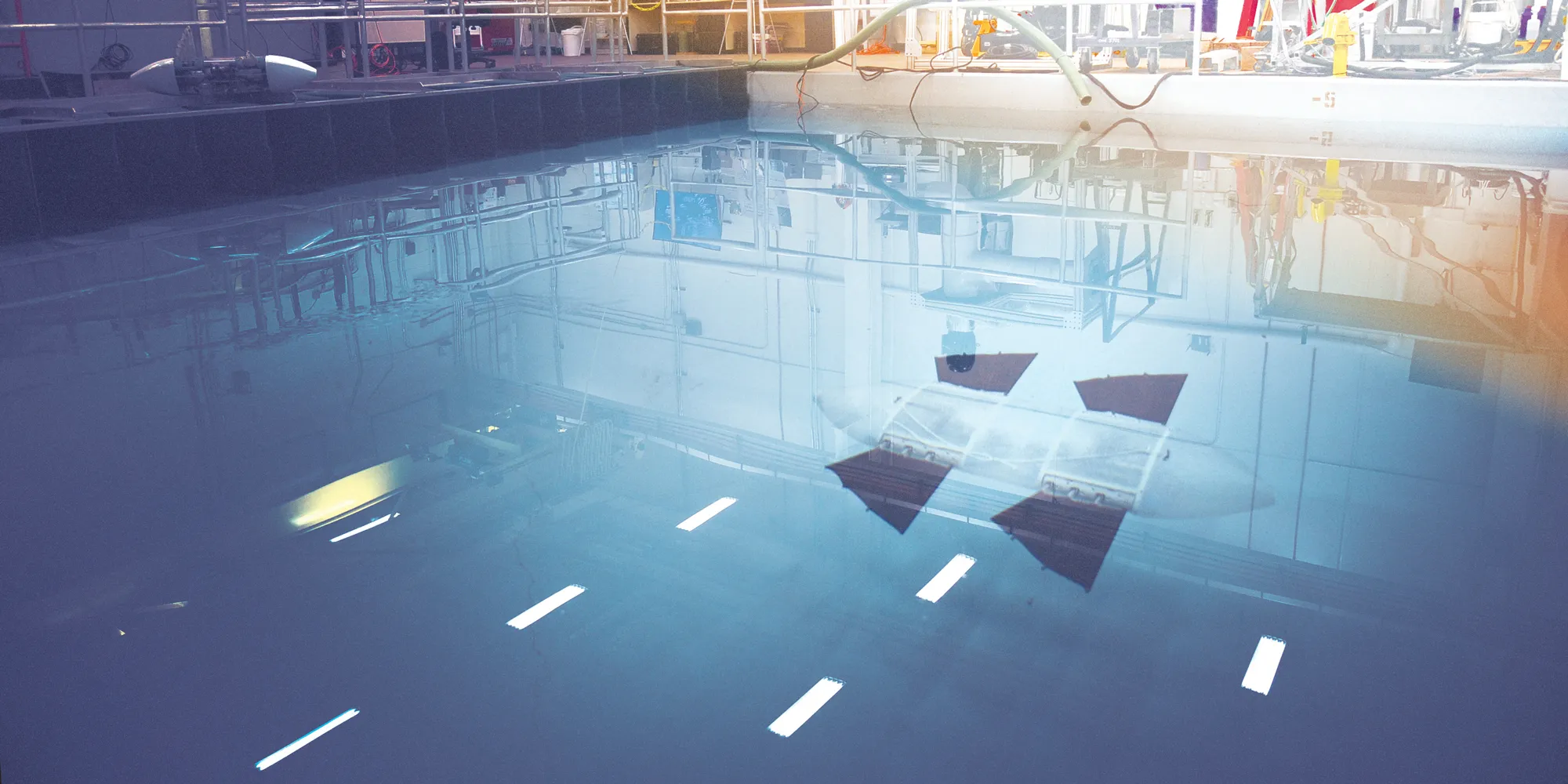Meet WANDA.
WANDA (Wrasse-inspired Agile Near-shore Deformable-fin Automaton) is an autonomous underwater vehicle developed by PI Jason Geder in NRL's Laboratories for Computational Physics and Fluid Dynamics.
See WANDA in Foreign Policy, Naval Technology, and PCMag.

Summary
Autonomous underwater vehicles (AUVs) are versatile and inexpensive. Commercially, AUVs can map out subsea pipelines and internet cabling and monitor this critical undersea infrastructure. AUVs gather important data for scientists, using sensors to measure element concentrations or oceanic data. AUVs have also been used to clean oil spills and maintain ecosystem health. From a military perspective, UUVs (Unmanned underwater vehicles) are the future; inexpensive UUVs can sweep mines, inspect/identify vessels, and conduct reconnaissance/surveillance missions, all without risking the lives of military personnel.
While large-sized UUVs have large propulsion systems that allow for efficient and fast movement, small-sized UUVs need to maneuver in tight, small and often turbulent conditions with smaller batteries. Optimizing thrust generation and efficiency is critical and navigation systems that control UUV movement remain unoptimized. I proposed a new innovative machine learning approach to solve this problem, the algorithm I put together first determined the best possible route and then found the best combination of fin movements for desired combination of thrust generation and efficiency level. This has been historically difficult for any autonomous vehicle, as models must be fast enough to calculate live movement adjustments and small enough to use less power than they save; previous literature has attempted conventional navigation optimizations without incorporating ML approaches.
Throughout my research at NRL, I collected a comprehensive dataset of physical underwater fin robotics movement data; to my knowledge, this dataset is the most comprehensive dataset spanning three fin material types across four variable ranges of possible movements. I utilized this data to demonstrate that we can create a fast and power-constrained model, that calculates the next optimal movement in under half a second based on desired metrics. As a result, I improved model accuracy by 98.15%, allowing us to save an average of 3 Watts of power for any movement (the full range is from 0-9W). In a further study, I demonstrated that machine learning can be an effective predictor of the physical outcome of any given movement pattern. This includes examples of the force generation and power consumption, which is useful for studies where datasets are small but span the full space of desired movement data. From this model, I developed dynamic power-saving and max-acceleration modes for the UUV, allowing us to prioritize various objectives as needed. The test platform that I utilized to gather data for flapping fin gait motion was created prior to when I arrived at NRL, but I was responsible for finding research literature and topics; modifying the platform to adapt for a variety of fins; selecting the gait combinations for data collection; and collecting all of the datasets myself over the span of the project.
My research makes the small and inexpensive AUVs needed for any of those tasks faster and more energy efficient. With the computational power of a Raspberry Pi, the same robot can move larger ranges, opening the possibility for new applications. My code can be integrated into any existing AUV/UUV platform. Beyond underwater vehicles, demonstrating that small-sized machine learning works well for small, power-constrained systems has implications for other autonomous or self-driving technology. For example, the same concepts could be applied to unmanned aerial vehicles or small food delivery robots. My results are currently being published so that researchers/roboticists can build upon my work for their applications.
